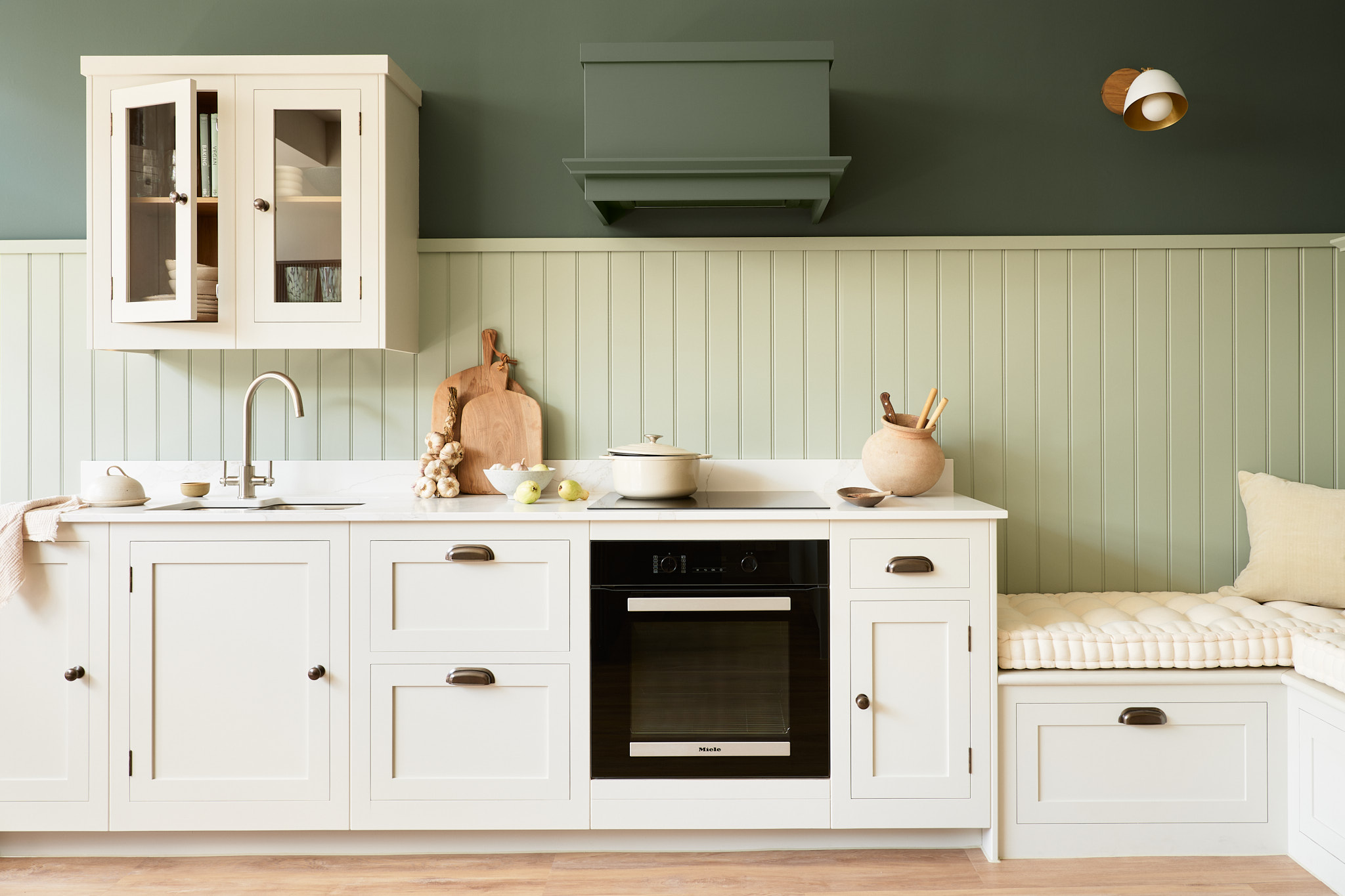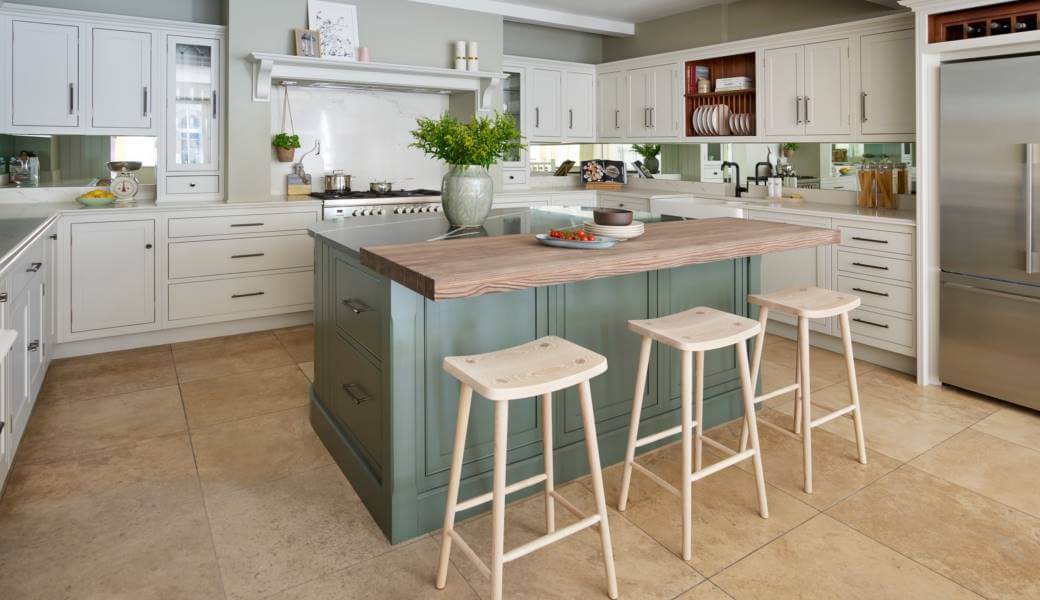
Underfloor heating is a great choice for kitchens – from brand new extensions to a simple cabinetry and surfaces makeover. Perfect for under any floor, it’s particularly good if you’re opting for a tiled surface, as it will ensure you don’t have to tiptoe over icy cold tiles floors on a winter morning. Its other main advantage is that it’s always concealed – apart from discrete wall-mounted controls – and does not interfere with the overall concept and design of a kitchen space.
There are two main types of kitchen underfloor heating – electric mat or ‘wet’ pipe systems. While the former is a great option for makeovers, the ‘wet’ system is an efficient choice solution for a new extension. It’s a practical, easy to install alternative to radiators and if you invest in a ‘wet’ pipe version, it’s pretty economical too.
WET SYSTEMS
More complex to install, this type of underfloor heating is a good solution for new structures, such as kitchen extensions, where the structure is being built from scratch. It consists of polythene pipes, a thermostat and pump system that are laid under a screed with the final floor going above that. It connects to your normal domestic hot water supply and, because of the efficiency of the pipes, water needs only to be heated up to 55˚C or so to achieve the same output as a traditional radiator. The piping systems often carry long maker’s guarantees, too – up to 25 years in some cases.
ELECTRIC MAT SYSTEMS
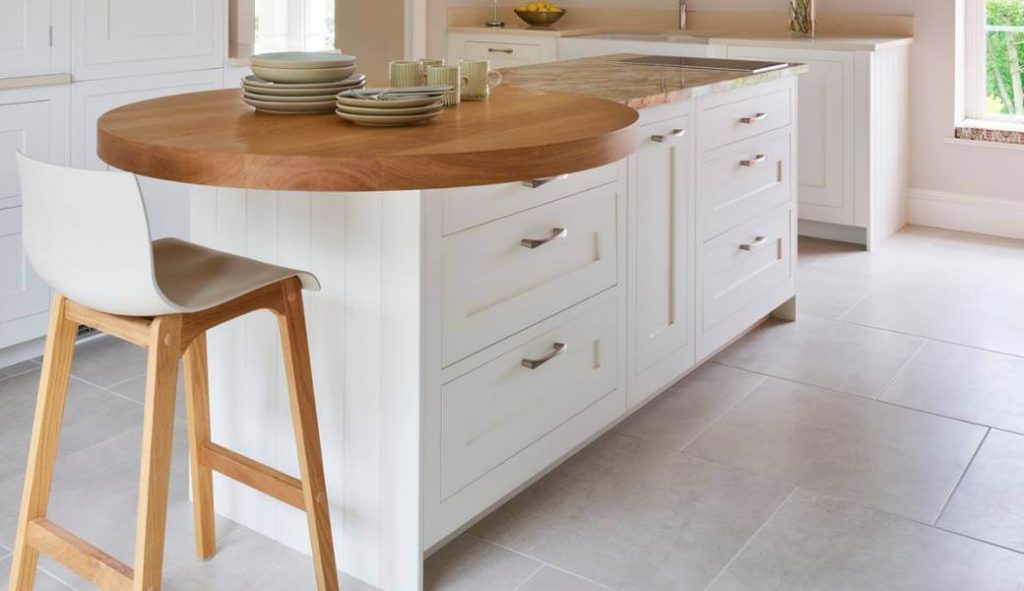
Dry or electric systems use an electric cable system, usually on a mesh matt, which is connected to a thermostat and timer. It’s also rolled out underneath the floor and works on most types of flooring. It will heat up quicker than a ‘wet’ system as there’s no layer of screed to get through, but while it’s cheaper to buy initially, it’s a more expensive system to run. Exact costs of your underfloor heating will depend on your energy supplier so it’s a good idea to check your rates before you install.
TOP TIPS
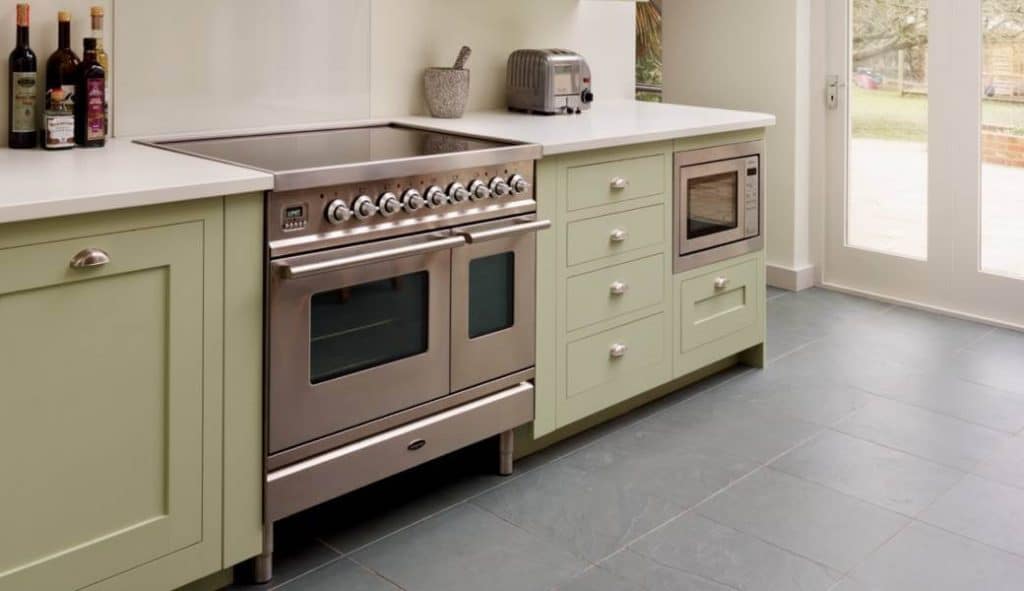
When deciding on your underfloor heating, it’s a good idea to look at the layout of your kitchen before you install. For instance, there will be no need to run heating underneath cabinetry and you should ensure you don’t install below fridges or ovens, either.
The benefits of underfloor heating can easily be incorporated into you
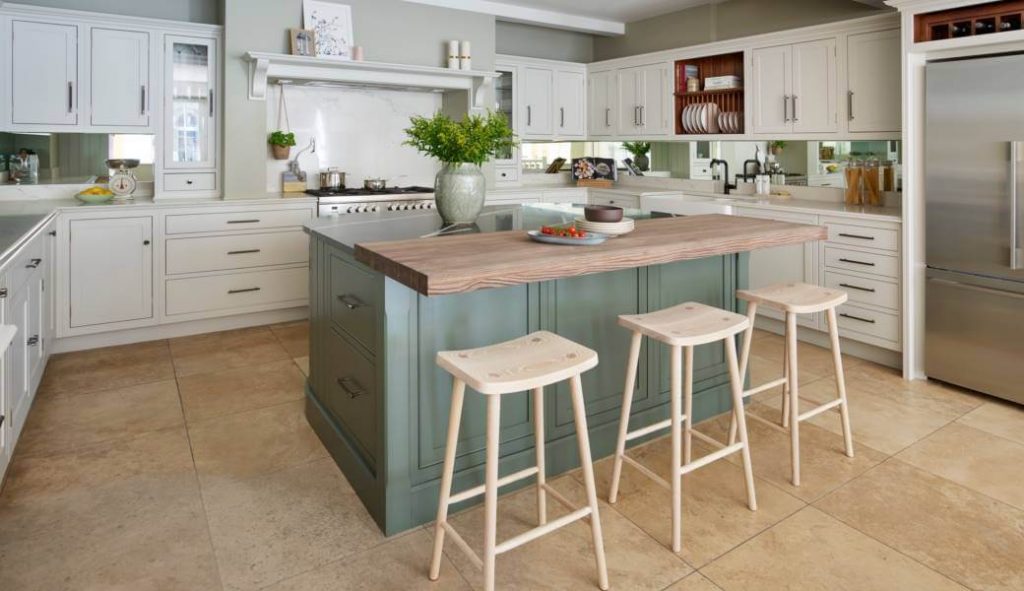
r kitchen. Looking for more flooring inspiration? Visit our blog here for essential guides.






